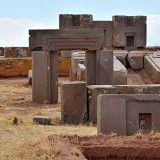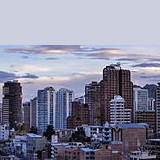
|
Salar de Juni Bolivia Last Updated: 08/28/2023 |
| The Salar de Uyuni, located in southwestern Bolivia, is the world's largest salt flat and one of the most breathtaking natural landscapes on the planet. This vast expanse of salt crust covers an area of over 10,000 square kilometers (3,900 square miles) and offers a surreal and otherworldly experience for visitors. | |
| - Location: Salar de Uyuni is situated in the Altiplano region of southwestern Bolivia, near the town of Uyuni. - Formation: The salt flat was formed as a result of the evaporation of prehistoric lakes. It is a remnant of the massive Lake Minchin that existed thousands of years ago. - Vast Expanse: The salt flat creates a seemingly endless and mirror-like surface that reflects the sky, giving the illusion of merging with the horizon. - Surreal Landscape: During the rainy season, a thin layer of water covers the salt crust, creating a stunning mirror effect that turns the salt flat into a giant reflective surface. - Salt Extraction: The Salar de Uyuni contains a significant amount of salt, and salt extraction is an important economic activity for the local communities. - Flora and Fauna: Despite the harsh conditions, the salt flat supports unique plant and animal life, including flamingos that inhabit the nearby lakes. - Island Incahuasi: In the middle of the salt flat, there is a rocky island called Incahuasi Island. It is covered in giant cacti and offers panoramic views of the surrounding area. - Photography: The surreal landscape of Salar de Uyuni provides endless opportunities for photography, with its reflections, stark contrasts, and playful optical illusions. - Starlit Nights: The salt flat's vastness and remote location make it an ideal spot for stargazing, offering clear views of the night sky. - Tourism: Salar de Uyuni has become a popular tourist destination, with guided tours that allow visitors to explore the salt flat, visit nearby attractions, and experience the unique beauty of the area. - Seasonal Changes: The appearance of the salt flat changes with the seasons, from the dry season with its hexagonal salt patterns to the wet season with its mirror effect. Visiting Salar de Uyuni provides an otherworldly experience that's both visually stunning and culturally enriching. | |
Wikipedia
Bolivia » Bol
Place » Historical Place

|
Puma Punku Place » Historical Place Puma Punku is an ancient archaeological site located near the city of Tiwanaku in Bolivia. It is believed to have been built by the Tiwanaku culture around 500 AD, and it is considered one of the most important and mysterious archaeological sites in South America. 459 views 💖 1Tiwanaku, Bolivia |

|
Bolivia Place » City Bolivia, officially the Plurinational State of Bolivia, is a landlocked country located in western-central South America. The population increased from 8,274,325 (from which 4,123,850 were men and 4,150,475 were women) in 2001 to 10,059,856 in 2012. Bolivia has a diverse landscape that includes the Andes mountain range, the Amazon rainforest, and the Altiplano plateau. 384 views 💖 1Bolivia |

|
Tiwanaku Place » Historical Place Tiwanaku is a ruined ancient city near Lake Titicaca in western Bolivia. Tiwanaku (or Tiahuanaco) was the capital of the Tiwanaku empire between c. 200 - 1000 CE and is situated in the Titicaca basin. At an altitude of 3,850 metres (12,600 ft) it was the highest city in the ancient world and had a peak population of between 30,000 and 70,000 residents. 465 views 💖 4Bolivia |
Write a Review :
Salar de Juni
|
|